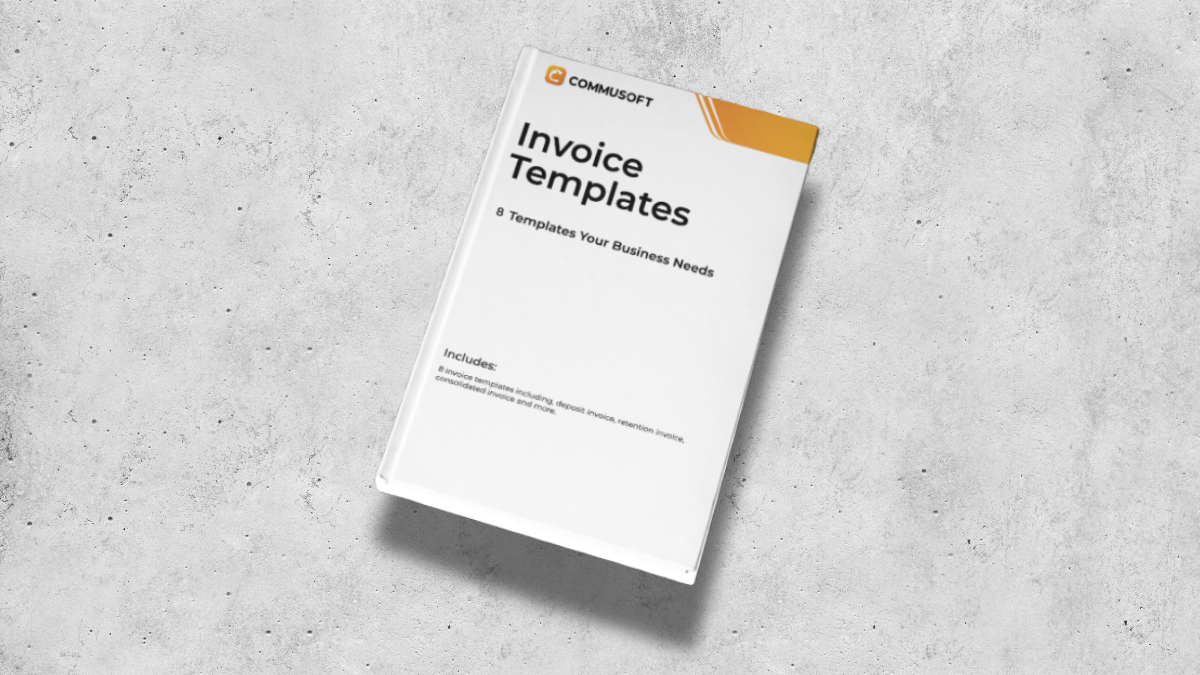Secrets to Writing a Tender That Wins Contracts
November 20, 2018 | Read: 7 minutes

Wondering how to write winning tenders? If you plan to tender for service and maintenance contracts, the most challenging part may be writing the tender.
After all, not everyone is a skilled writer, and tenders will have specific rules and requirements to follow if you want a chance at winning.
When you have an opportunity that’s right for your field service business and know the basics of what goes into a tender, it’s helpful to delve into the writing aspect of tendering for a contract.

How Do I Write Tenders that Win Contracts?
There are the steps to writing a winning tender. Click the titles to jump to the one that matters most to you!
This may sound like a lot, but don’t worry—we’ve got you covered. Read on for details and expert tips.
1. Gather your materials
Get all your research, statistics, and data all in one place. For example:
- Access your job management software to analyse your first-time fix rate, response times, etc.
- Open up browser tabs to websites with stats and data you can use, such as government websites and certifying bodies for your industry.
- Open up your business website. If you have any copy on there, you may want to swipe from it.
- Gather any paper materials you have, like policy manuals and financial documents.
Having all this together will keep you from losing steam if you suddenly realise while writing the tender that you’re missing vital information.
2. Analyse the questions
Naturally, you want to answer all the questions the buyer asks. However, there’s another, more important reason for analysing the questions: It helps you figure out what the buyer really needs! With that knowledge, you can address it directly in your tender.

For example, say there are ten questions for an HVAC contract, and four are on safety. The buyer could have asked all kinds of questions about your financial or service delivery models, yet 40% are on safety. What could this mean?
Perhaps the client site is unsafe, for example, or the incumbent provider was causing people to be injured.
“Every time a public authority goes to market with a tender, it represents the solution to a problem,’ McKelvie says. ‘They specify what their solution is, but they don’t tell you what the problem is. If you can figure it out, you can speak to the problem, and then explain how what you’re going to do delivers good things.”
Tony McKelvie, a Director at Tenders-UK
This approach lets you change the narrative. While your competitors focus on meeting the requirements, you can go beyond the requirements to solve any of the typical problems field service companies have, such as offering an online appointment system.
‘So when the commissioner has to read all these bids, all of a sudden they start reading about solving problems and the good things that will happen,’ says McKelvie. ‘The evaluator is a human being, and says, “Thank goodness for that, you’ve given me something interesting to read!”’
Tony McKelvie, a Director at Tenders-UK
3. Nail the style
Speaking of compelling reading, imagine being the poor evaluator reading through piles of dry, bland tenders. Eventually, they all blend together into an undifferentiated pile of blah.
While humour and flowery prose aren’t a good fit for a tender, that doesn’t mean your tender has to read like a business memo. Here are some style tips for keeping things interesting.
- Keep your sentences short and concise.
- Use bullet points and other formatting methods to enhance readability.
- Keep your language positive and engaging.
- Research the client—for example, their website, written materials, and customer communications—so you can write in a similar style to theirs, which shows you understand the client. (This is a tip from Tenders-UK.)
- Ditch the jargon and fancy words. Don’t use a long word when a short one will do.
- Be active. Overusing the passive voice (“The boilers were installed by XYZ Heating”) makes your writing sound weaker and less direct. Use the active voice (“XYZ Heating installed the boilers”) instead.
Need more help?
You’ll find some excellent advice in the article How to Write in Plain English from the Plain English Campaign.
4. Use this “one weird journalism trick”
Earlier, we talked about not losing your concentration.
Chances are, even if you think you’ve gathered everything you need before writing, you’ll still discover that you’re missing critical information.
Here’s a tip from journalism on how to keep rolling even when that happens: Use the term “TK”, which stands for “to come.” (There are many theories about why it’s a K and not a C.) Journalists drop this term into articles when they know they’re missing information but want to keep moving.
When you’re done with your tender-writing session, search for the “TKs” in your document and do whatever research is needed to fill in the missing details.
5. Proofread the tender
Once you have your tender written, it’s time to make sure it’s perfect. That’s where proofreading comes in. Eliminate all distractions before undertaking this step because proofreading is detailed work that requires a lot of focus.
This helpful article from Tenders-UK spells out everything you need to double-check when proofreading your tender. For example, make sure you have:
- Proper spelling and grammar
- A consistent typeface/font.
- A readable structure.
- A consistent “voice,” especially if you have information from other stakeholders or contributors in the document.
Then follow these next tips for ensuring you catch every last mistake in your tender; these tactics come from my 20+ years of journalism experience, so while they may sound a little odd…they work!
Read it backward: That’s right! Start at the end and read your content backward. This will help you catch misspellings and misused words you didn’t notice before.
Read it out loud: When you read your content out loud, any awkward sentences, grammatical errors, or poor transitions will jump out at you. (You probably don’t want to do this one in public.)
Change the font: If you’ve ever copied and pasted a letter you wrote (and edited) into an email in a word processing document, you’ve probably noticed how you suddenly discover more errors.
Changing the font in your original doc before the final proofread, for example, from Helvetica to Times, can have the same effect. Just be sure to change it back to the one you want the buyer to see!
6. Consider hiring a pro
If you’re not confident in your ability when it comes down to how to write winning tenders, it might make sense to hire a business that can support you—so you can spend your time and resources on actually running your business.
“Are you the best person to do it, or are you better off working with someone who you can tell what’s in your head and then they can put it in the right format?”
David Williams, Director of Purple Patch Marketing Consultants.
You’ll find many tender-writing services online, including our experts from Purple Patch Marketing Consultants and Tenders-UK.
Going it alone? Here’s a guide to help:
There are a lot of moving parts in the tender-writing process. But with the right field service management software you can avoid becoming overwhelmed!
For extra help, read the 7 things property managers need to see in your contract tender:


Linda Formichelli
Linda is a long-time journalist and content writer in Raleigh, North Carolina, USA.








